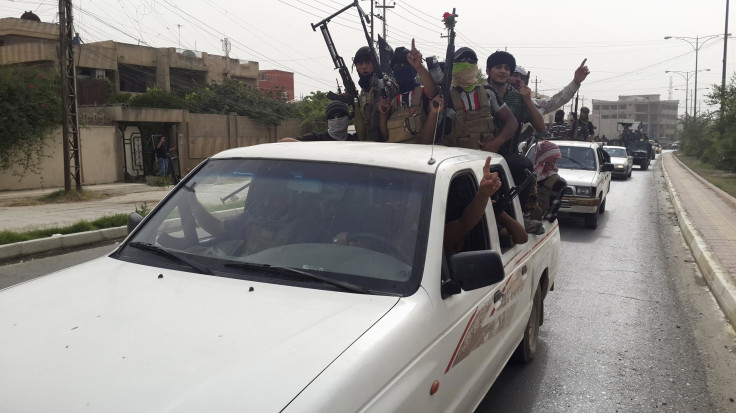Is It ISIS Or ISIL? Jihadist Group Expanding In Iraq Has Two Names, One Goal

This week, the stunningly fast advance in northern Iraq of the Islamic State of Iraq and Syria (ISIS), a Sunni militant group, has taken the world by surprise. As it takes over cities, including Iraq's second-biggest, Mosul, in its quest to establish an Islamic caliphate, the group is threatening to draw regional powers into an armed confrontation.
But there's one confusing thing about the fighters who once pledged allegiance to al Qaeda and have now been deemed too extreme even for the international terrorist group: their name is cited in Western media in two different ways.
Is it ISIS or ISIL? Both are correct. ISIS and the Islamic State of Iraq and the Levant (ISIL) are the same, the group which emerged during the U.S.-led invasion of Iraq in 2003 and was once led by the feared Abu Musab al-Zaraqwi, killed by the Americans in 2006.
The group changed its name in 2012 from the Islamic State of Iraq (ISI) to the Islamic State of Iraq and Greater Syria (ISIS), from the Arabic term for Levant, al-Sham. That is sometimes translated as the Islamic State of Iraq and the Levant (ISIL). It wanted to change its name to include a broader swath of land, as its goal was to create an Islamic state based on Sharia, or Islamic law.
The group, now led by Abu Bakr al-Baghdadi, is advancing toward that goal as it has now occupied parts of both Syria and Iraq, and continues its campaign south to Baghdad.
Although the rapid advance in the north is a new development, ISIS has fought to take over Shiite territory for years, but has never had the capacity.
A 2011 report published by the Center for Strategic and International Studies said al-Zarqawi developed a four-pronged strategy to defeat the American-led coalition in Iraq. One of the strategies was to draw the U.S. military into a Sunni-Shiite civil war by targeting Shiites.
That strategy is alive today. Earlier this week ISIS leaders said they planned to attack sacred Shiite shrines south of Baghdad. Just a few days later, President Obama made a statement saying that although the U.S. was not going to send troops into the country, it was moving an aircraft carrier to the Persian Gulf to possibly assist the Iraqi military.
Since the U.S. withdrew its troops from Iraq in late 2011, the Sunni-led extremist group has increased attacks on government targets, trying to reignite the fight against Prime Minister Nouri Al-Maliki and his Shiite-led government. 2013 was the deadliest year in Iraq since 2008.
But the group has yet to make any real gains in Shiite communities; it has so far only occupied Sunni regions in the north. According to most experts, ISIS will have a more difficult time taking over the closer it gets to the capital. It will have to gain the support of the locals, mostly Shiites, the further south it moves. However, the group recently took control of heavy weaponry the Iraqi military left behind in Mosul when it abandoned its posts on Tuesday. Those weapons, which include helicopters and tanks, could shift the balance of power in favor of ISIS in its fight with the Iraqi army.
© Copyright IBTimes 2024. All rights reserved.











